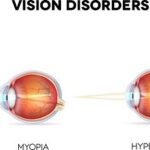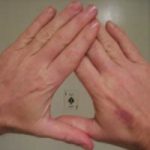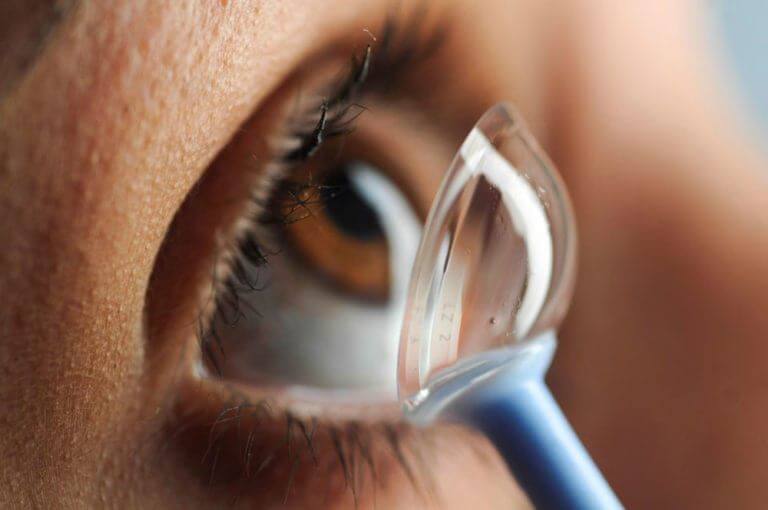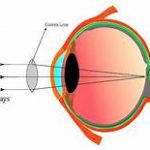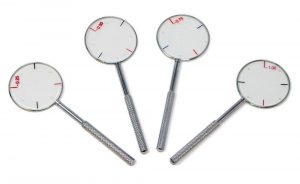Optometry is not just about prescribing an optical correction for diagnosed refractive error.
Optometrists’ work begins
from the moment a patient walks into the clinic to avail the competent services of an Optometrist & doesn’t end until
the smile of satisfaction on their faces confirms that a professional service has been rendered. The importance of skillful
prescription & dispensing increases manifolds when kids are in the clientele.
Dispensing appropriate spectacles is of the utmost importance for the development of eyesight. A poorly fitting pair of
glasses can cause discomfort, permanent visual harm or even disfigurement. Any errors in dispensing will have a more
profound effect than in adults and children are not always able to communicate if something is uncomfortable or
impacting on their vision.
This article will look at some of the key points of dispensing spectacles to children – particularly in the less explored area
of Frame Selection, in order to give the best possible fit, cosmetic appearance and visual outcome.
Frame selection
A child’s face is not just a scaled down version of an adult’s face. There are a number of anatomical differences which
should be reflected in the choice of frame. The main differences are:
Reduced crest height
Larger frontal angle
Widened splay angle
Smaller bridge projection
Smaller head and temple width
Less pantoscopic tilt
The followings need to be considered while dispensing spectacles for kids:
Smaller crest height
Children live in a world designed and made by adults and consequently spend a lot of time looking up. A frame with a
small crest height will help by sitting the frame higher on the face. A profile that follows the line of the eye socket will
also help to ensure the child is looking through rather than over their glasses. Ideally, the child’s pupils should sit on, or
just above the Horizontal Centre Line (HCL) and just inside of the Vertical Centre Line. It is not acceptable for a child to
be using only the top 10 to 20% of the lens.
Bridge shape
As a result of the undeveloped nasal bridge, children often have larger frontal and splay angles. A frame must be chosen
with a large enough bridge and a frontal and splay angle that matches that of the child’s. The undeveloped nasal bridge
may also give children a negative bridge projection or a bridge projection of zero (sometimes known as an inset
bridge1).
This will reduce the back vertex distance (BVD) and consequently may cause the eyelashes to rub on the back
of the lenses. A frame with a negative bridge projection will sit the frame away from the face and prevent this from
happening.
Temple/ Head width
Ridges on the side of the patient’s head when the glasses are removed is a sign that the frame is fitting poorly and is
probably uncomfortable. Furthermore, if the temple or head width of the glasses is too small, the mechanical effect will
be that the glasses will slip and the patient may peer over the top of the frame. The frame should be no wider than the
widest part of the face.
Infants and young children may have a small pupil distance (PD) but require a larger head width.
By increasing angle of let back and putting a gentle bow in the sides it will ensure there is no pressure on the temples.
As with adult dispenses, choose a frame with a boxed centre distance similar to the patient’s PD. This will reduce the
amount of decentration required when glazing and consequently reduce edge thickness, giving a lighter, more
comfortable pair of glasses with the best cosmesis.
Pantoscopic angle
An adult frame normally has a pantoscopic angle of between 8 and 12 degrees. Children’s frames should have a
pantoscopic angle of around zero degrees to prevent them resting on the cheeks and causing ridges. Sometimes adding
a little pantoscopic tilt may help prevent the lashes from rubbing on the back of the lenses.
There is no one style of frame that will work for all children, so it is important to have a selection of different styles
available to try.
The facial anthropometry will change as a patient grows and their facial structure develops. Crest height and bridge
projection will increase while splay angle and frontal angle will decrease. By the age of 13 the measurements will
generally match those of an adult, although head width and length to bend will continue to increase after this.
Frame Material
The ideal child’s frame should be lightweight, flexible and hypoallergenic. A frame needs to be robust enough to
withstand a child’s active lifestyle. Generally, a frame made from one piece of plastic with no metal parts or hinges is
most suitable for babies and will reduce the risk of facial trauma from the glasses.
Side Styles
Broadly speaking, there are three types of side styles that can be used on children’s frames:
Drop ends (or hockey ends)
The sides supplied on a frame are frequently too long and require adjustment. The length to bend (LTB) is the distance
from the dowel point to the ear point and should be measured carefully. If it is too far forwards, it will cause the side to
lift upwards, rub the back of the ear and put a tilt on the front of the frame. Too far back, and the angle of the drop will
have to be very steep which will irritate the back of the ear and cause the glasses to slip down. The length of the drop
for a child should be around 30mm with the angle of bend approximately 45 degrees. Sides should be cropped if they
are longer than 35mm. This is straight forward for both metal and plastic frames.
Silicone Straps that can be fitted onto drop ends to hold the glasses in place may be supplied.
Curl sides
Curl sides should fit perfectly to avoid damaging the cartilage at the back of the ear. Poorly fitting curl sides can pull on
the ear and deform it.The curl side should follow the contour of the back of the ear, be flush against the side of the head
and finish just before the ear lobe. Silicone covering on the curl sides makes them softer and more comfortable to wear.
Measure the length to tangent and total length of the side. The length to tangent is the distance from the dowel point to
a tangent at the back of the ear (i.e. the apex of the curl) and the side length is the distance from the dowel point to the
tip of the side when straight. Side length can be measured easily on a patient using a length of string to follow the
position of the side.
Loop ends
Both plastic and metal frames can be converted to loop ends and these should be positioned around 10mm past the ear
point. A strap can then be fitted to help hold the glasses in place.
Spectacle straps tend to sit at the base of the head owing to the curved shape of the skull. Children have very soft ear
cartilage so caution is needed as the straps can cause the ears to be pulled downwards resulting in malformations.
Regardless of which style of side is used, a visual inspection should always be carried out behind the ear to check the
fitting of the sides.
Bridge Styles
The fit of the bridge is extremely important as it supports around 90% of the weight of the spectacles. Prolonged
pressure on the crest of the bridge could cause the fatty tissue to break down and potentially cause deviation of the
septum.
The bridge should spread the weight of the frame over as large an area as possible in order to provide the
maximum support with the least pressure.
The different bridge styles available are:
‘Pad on Arms’
‘Pad on arms’ can easily be adjusted but they need frequent adjustment because, with wear, the distance between pads
becomes too wide causing the glasses to sit too low on the face so that the child ends up peering over the top of the
frame. If the pads provided with the frame are not suitable, they should be changed. Silicone pads are softer,
hypoallergenic and often help to provide more grip on the nose. Larger pads may be used to spread the weight over a
larger surface area, while smaller pads can be useful for small noses in order to avoid the inner canthus. The pad arms
can also be removed and re-soldered at a different point on the nasal rim to give a suitable crest height.
Strap bridges
A ‘pad on arms’ bridge can easily be converted to a strap bridge. This style of bridge is better at spreading the weight
over a larger surface area but again, needs frequent adjustment in order to prevent the entire weight being carried on
the crest of the nose.
Saddle Bridges
A saddle bridge spreads the weight well and is good at absorbing any impact. This is the ideal style of the bridge for a young
a child wearing a metal frame.
Bridges on plastic frames
For plastic frames, the bridge should match the shape of the patient’s nose exactly and be in constant touch all the way
around. A gap at the top indicates the bridge is too narrow. A gap at the bottom means the bridge is too wide and will
result in the glasses falling down.
Keyhole bridges
Keyhole bridges can work for some older children as the shape distributes the weight of the glasses along the sides of
the nose rather than on the crest.
The selection of frames should be coupled with the appropriate choice of lenses, duly calculated prescription as per the
the actual position of wear to deliver the best visual results with optimal comfort to help in the development of “Happy
Eyes”.




